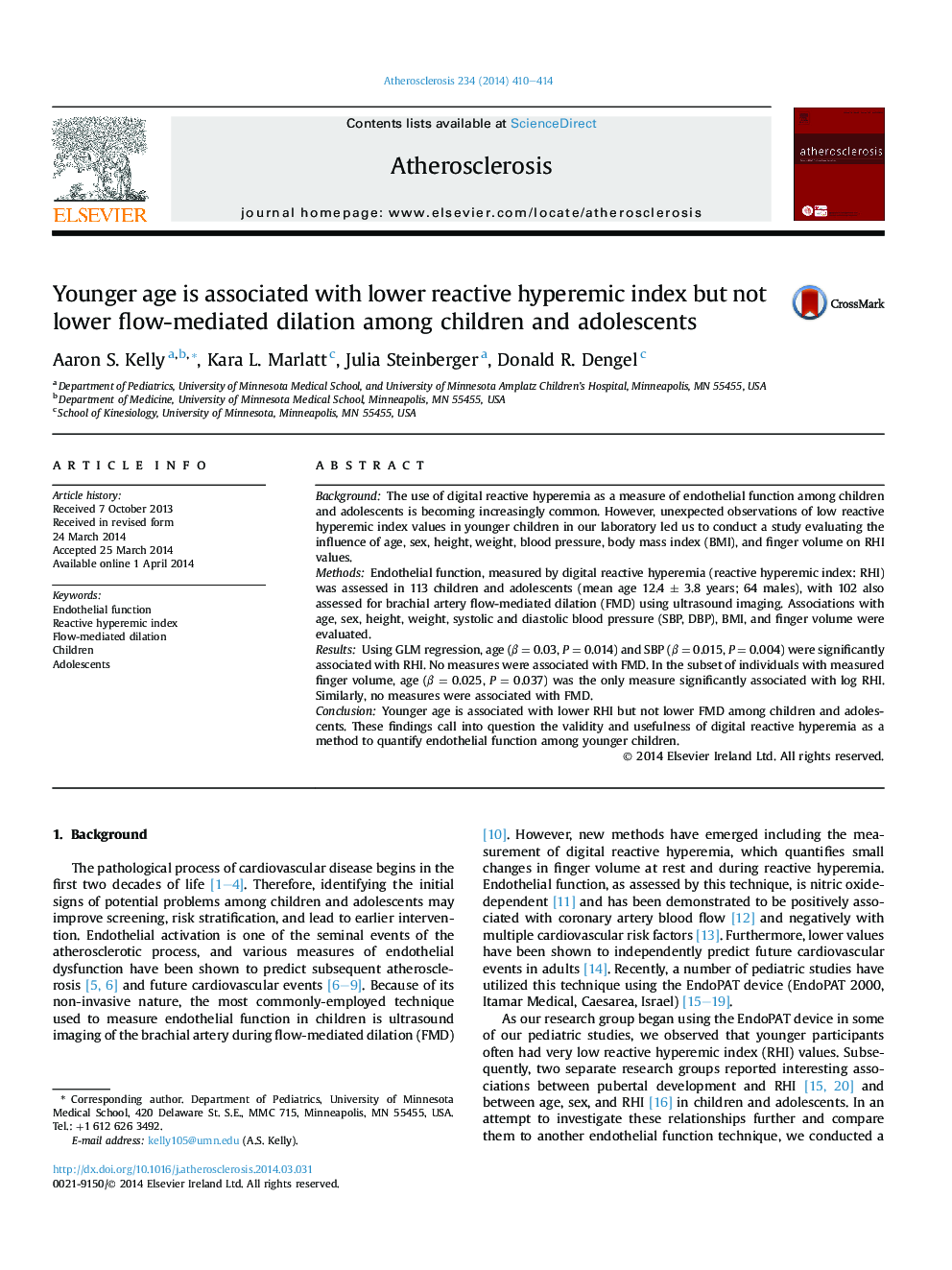| Article ID | Journal | Published Year | Pages | File Type |
|---|---|---|---|---|
| 5946752 | Atherosclerosis | 2014 | 5 Pages |
â¢Digital reactive hyperemia has been used to measure endothelial function in youth.â¢Finger probes used with this technique were not designed for use in children.â¢We demonstrate a paradoxical relationship between age and reactive hyperemic index.â¢Digital reactive hyperemia may not be a valid technique in children.
BackgroundThe use of digital reactive hyperemia as a measure of endothelial function among children and adolescents is becoming increasingly common. However, unexpected observations of low reactive hyperemic index values in younger children in our laboratory led us to conduct a study evaluating the influence of age, sex, height, weight, blood pressure, body mass index (BMI), and finger volume on RHI values.MethodsEndothelial function, measured by digital reactive hyperemia (reactive hyperemic index: RHI) was assessed in 113 children and adolescents (mean age 12.4 ± 3.8 years; 64 males), with 102 also assessed for brachial artery flow-mediated dilation (FMD) using ultrasound imaging. Associations with age, sex, height, weight, systolic and diastolic blood pressure (SBP, DBP), BMI, and finger volume were evaluated.ResultsUsing GLM regression, age (β = 0.03, P = 0.014) and SBP (β = 0.015, P = 0.004) were significantly associated with RHI. No measures were associated with FMD. In the subset of individuals with measured finger volume, age (β = 0.025, P = 0.037) was the only measure significantly associated with log RHI. Similarly, no measures were associated with FMD.ConclusionYounger age is associated with lower RHI but not lower FMD among children and adolescents. These findings call into question the validity and usefulness of digital reactive hyperemia as a method to quantify endothelial function among younger children.
